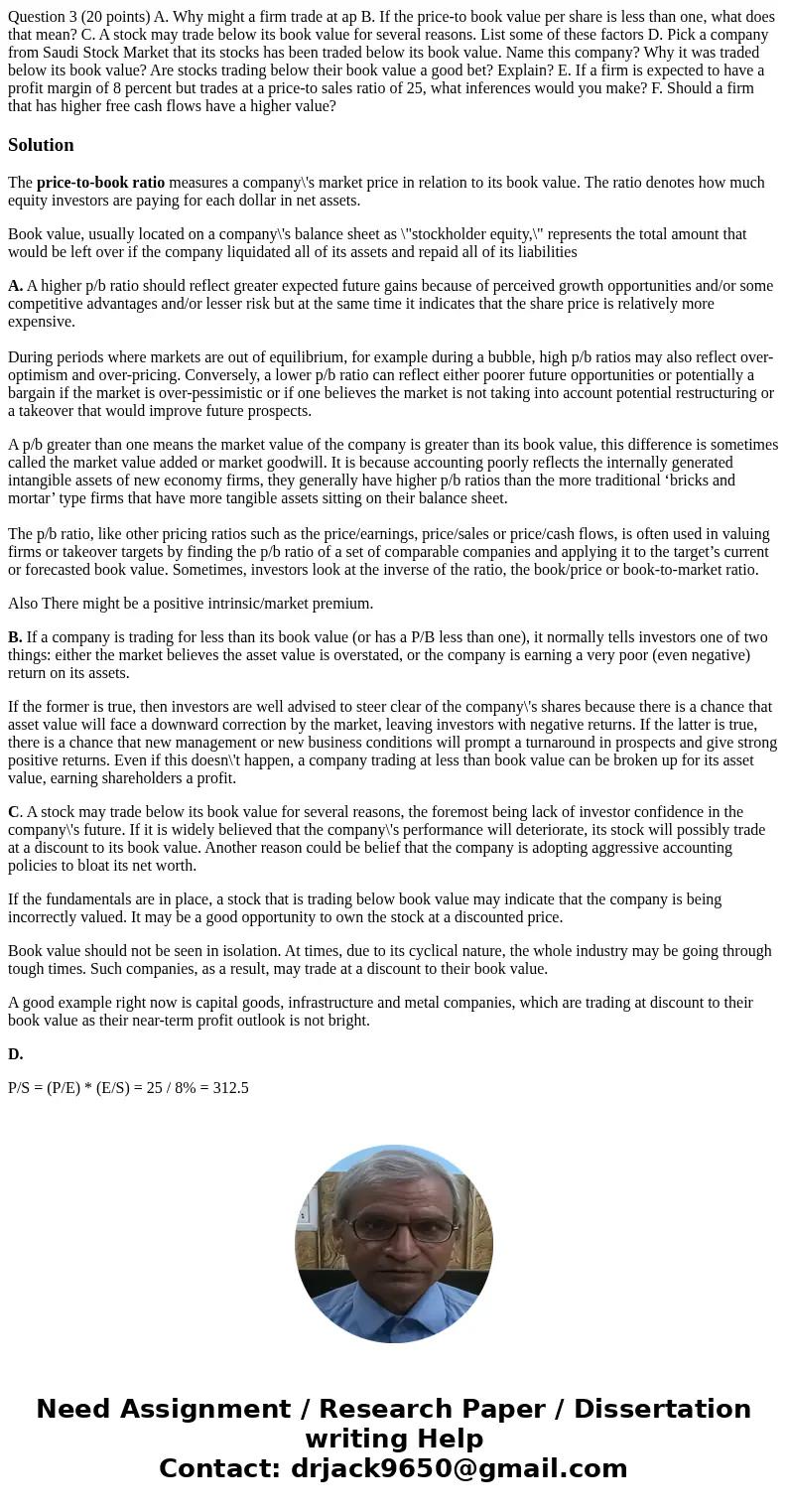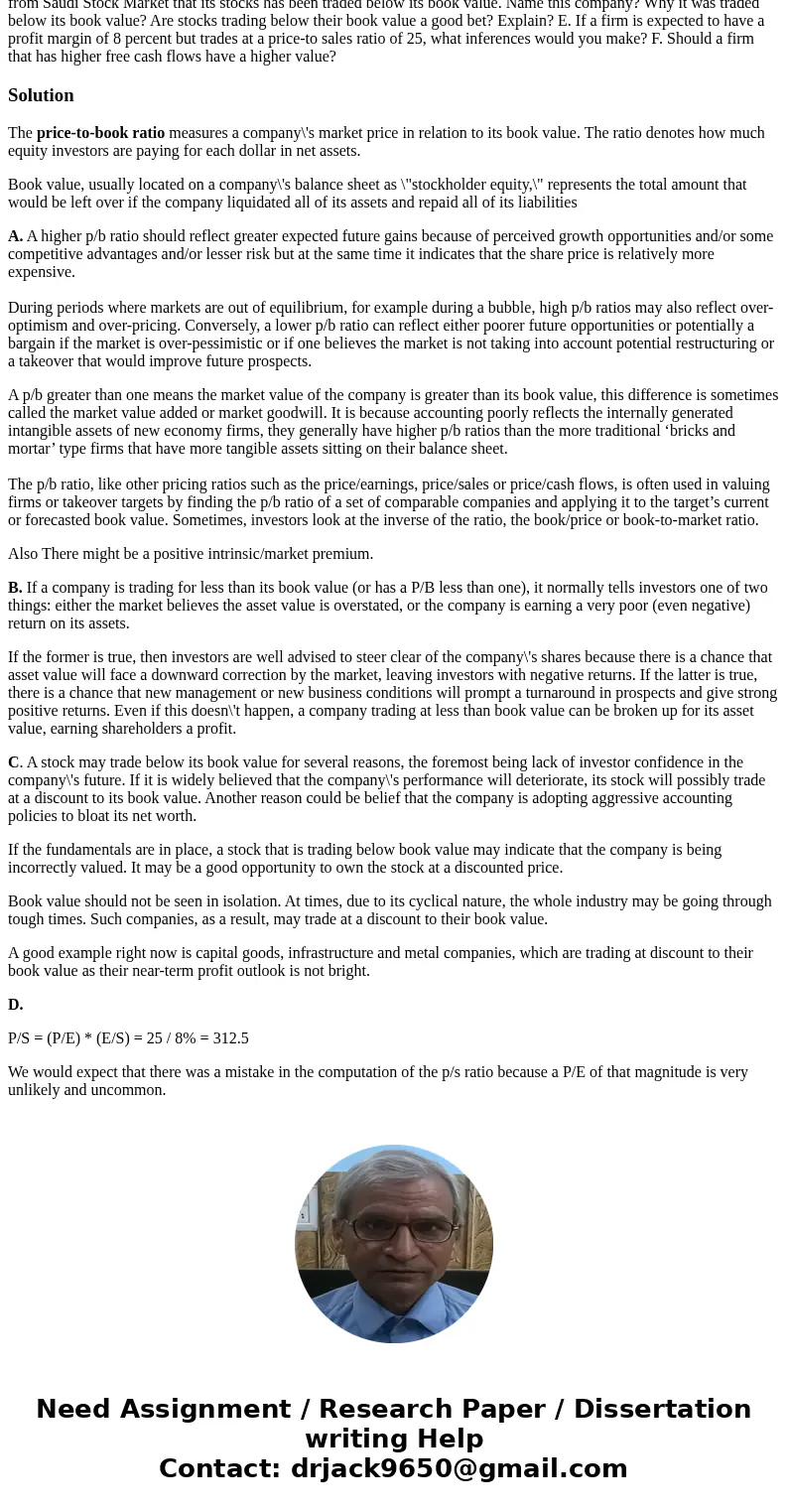Question 3 20 points A Why might a firm trade at ap B If the
Solution
The price-to-book ratio measures a company\'s market price in relation to its book value. The ratio denotes how much equity investors are paying for each dollar in net assets.
Book value, usually located on a company\'s balance sheet as \"stockholder equity,\" represents the total amount that would be left over if the company liquidated all of its assets and repaid all of its liabilities
A. A higher p/b ratio should reflect greater expected future gains because of perceived growth opportunities and/or some competitive advantages and/or lesser risk but at the same time it indicates that the share price is relatively more expensive.
During periods where markets are out of equilibrium, for example during a bubble, high p/b ratios may also reflect over-optimism and over-pricing. Conversely, a lower p/b ratio can reflect either poorer future opportunities or potentially a bargain if the market is over-pessimistic or if one believes the market is not taking into account potential restructuring or a takeover that would improve future prospects.
A p/b greater than one means the market value of the company is greater than its book value, this difference is sometimes called the market value added or market goodwill. It is because accounting poorly reflects the internally generated intangible assets of new economy firms, they generally have higher p/b ratios than the more traditional ‘bricks and mortar’ type firms that have more tangible assets sitting on their balance sheet.
The p/b ratio, like other pricing ratios such as the price/earnings, price/sales or price/cash flows, is often used in valuing firms or takeover targets by finding the p/b ratio of a set of comparable companies and applying it to the target’s current or forecasted book value. Sometimes, investors look at the inverse of the ratio, the book/price or book-to-market ratio.
Also There might be a positive intrinsic/market premium.
B. If a company is trading for less than its book value (or has a P/B less than one), it normally tells investors one of two things: either the market believes the asset value is overstated, or the company is earning a very poor (even negative) return on its assets.
If the former is true, then investors are well advised to steer clear of the company\'s shares because there is a chance that asset value will face a downward correction by the market, leaving investors with negative returns. If the latter is true, there is a chance that new management or new business conditions will prompt a turnaround in prospects and give strong positive returns. Even if this doesn\'t happen, a company trading at less than book value can be broken up for its asset value, earning shareholders a profit.
C. A stock may trade below its book value for several reasons, the foremost being lack of investor confidence in the company\'s future. If it is widely believed that the company\'s performance will deteriorate, its stock will possibly trade at a discount to its book value. Another reason could be belief that the company is adopting aggressive accounting policies to bloat its net worth.
If the fundamentals are in place, a stock that is trading below book value may indicate that the company is being incorrectly valued. It may be a good opportunity to own the stock at a discounted price.
Book value should not be seen in isolation. At times, due to its cyclical nature, the whole industry may be going through tough times. Such companies, as a result, may trade at a discount to their book value.
A good example right now is capital goods, infrastructure and metal companies, which are trading at discount to their book value as their near-term profit outlook is not bright.
D.
P/S = (P/E) * (E/S) = 25 / 8% = 312.5
We would expect that there was a mistake in the computation of the p/s ratio because a P/E of that magnitude is very unlikely and uncommon.


 Homework Sourse
Homework Sourse